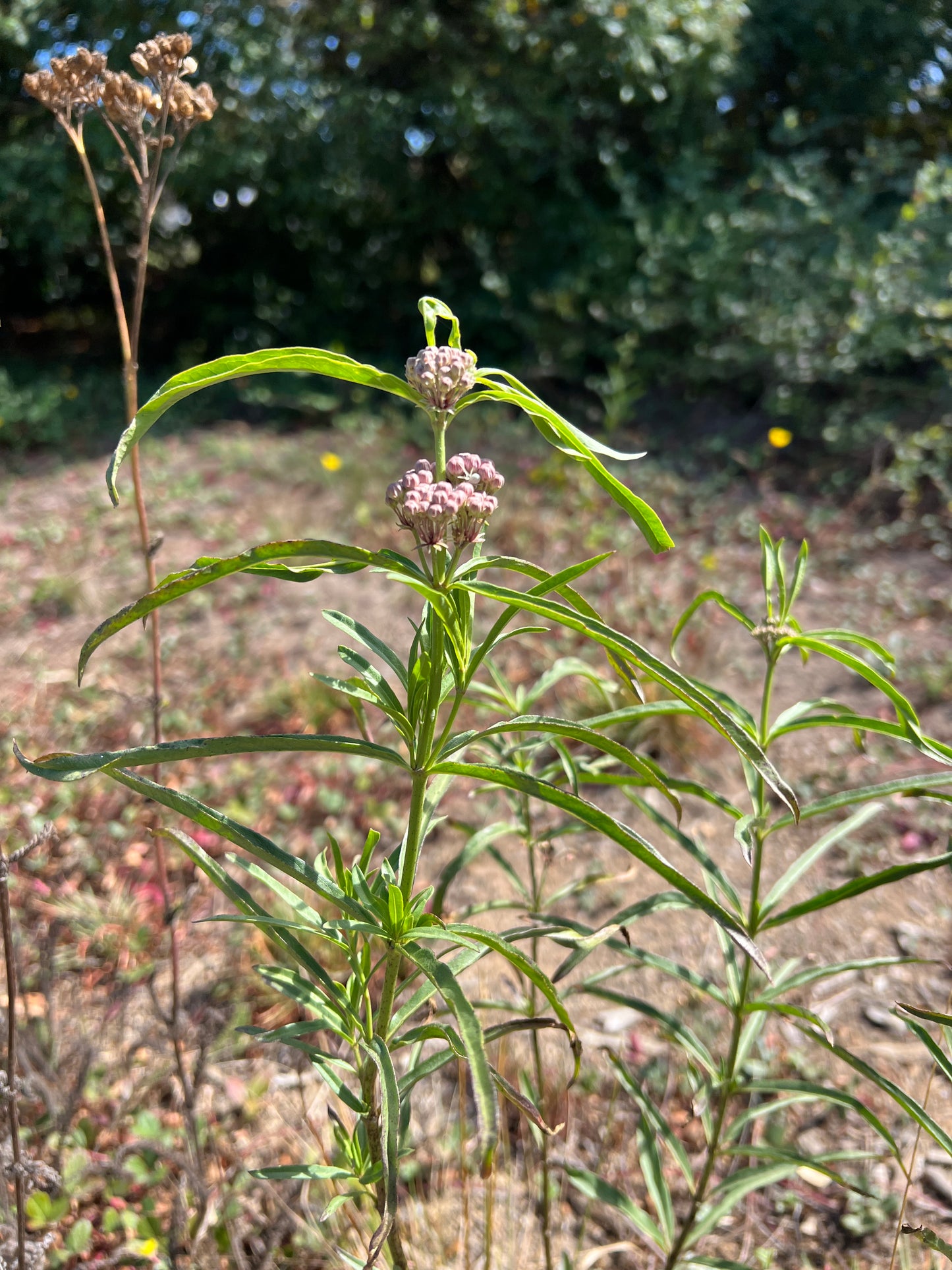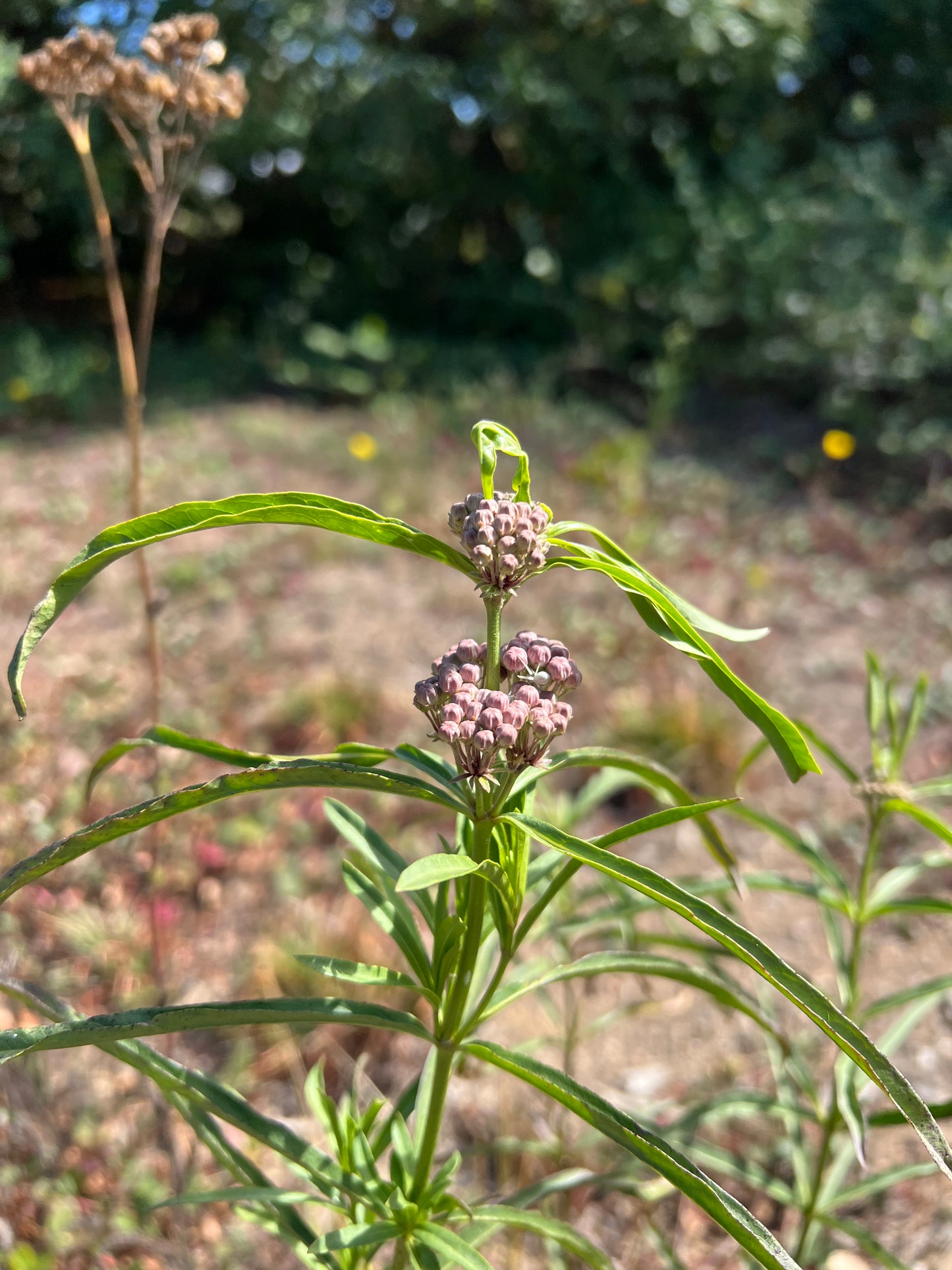Asclepias fascicularis, Narrow-leaf Milkweed
Asclepias fascicularis, Narrow-leaf Milkweed
Couldn't load pickup availability
Description and Ecology
This very attractive and fragrant subshrub has showy, greenish white flowers tinged with purple.The native milkweeds are famous for being a host plant for the monarch butterfly, and this species is one of the most widespread and easiest to grow. The butterfly lays its eggs on milkweed plants and only on milkweed plants, which supply the nutrients the egg needs as it turns into a caterpillar. Research on the reasons trend towards monarch extinction always lists the absence of only native as a major factor in successful monarch reproduction. Can be seen in summer covered with the green caterpillars that will become monarch butterflies. It grows 2-4' tall in full sun and can handle some shade. Do not plant non-native milkweeds; they can be a serious problem.
Xerces Native Milkweed Planting and Establishment Guide for the Western United States
Growing Procedures
There are 75-100 seeds per packet, enough for at least 25 to 30 plants. Milkweeds need cold-stratification, which simulates cold weather. Place seed on damp paper towel. Put the towel and the seed in a plastic bag and place in a refrigerator. This is "cold-stratification." After a month, sow the seeds in a warm greenhouse. The seeds will appreciate some warmth to germinate. It goes dormant in the late summer. It spreads through underground rhizomes.
Tips
We recommend using species that grow in your region, if possible. Coastal gardeners should think twice before planting milkweeds, which may not have grown there historically. It may create problems to draw migratory species out of their regular patterns. For example, some species may not have resistance to the fungi stimulated by fog. The caterpillars that will develop on that plant may not survive, thereby "wasting" the eggs of that species.






